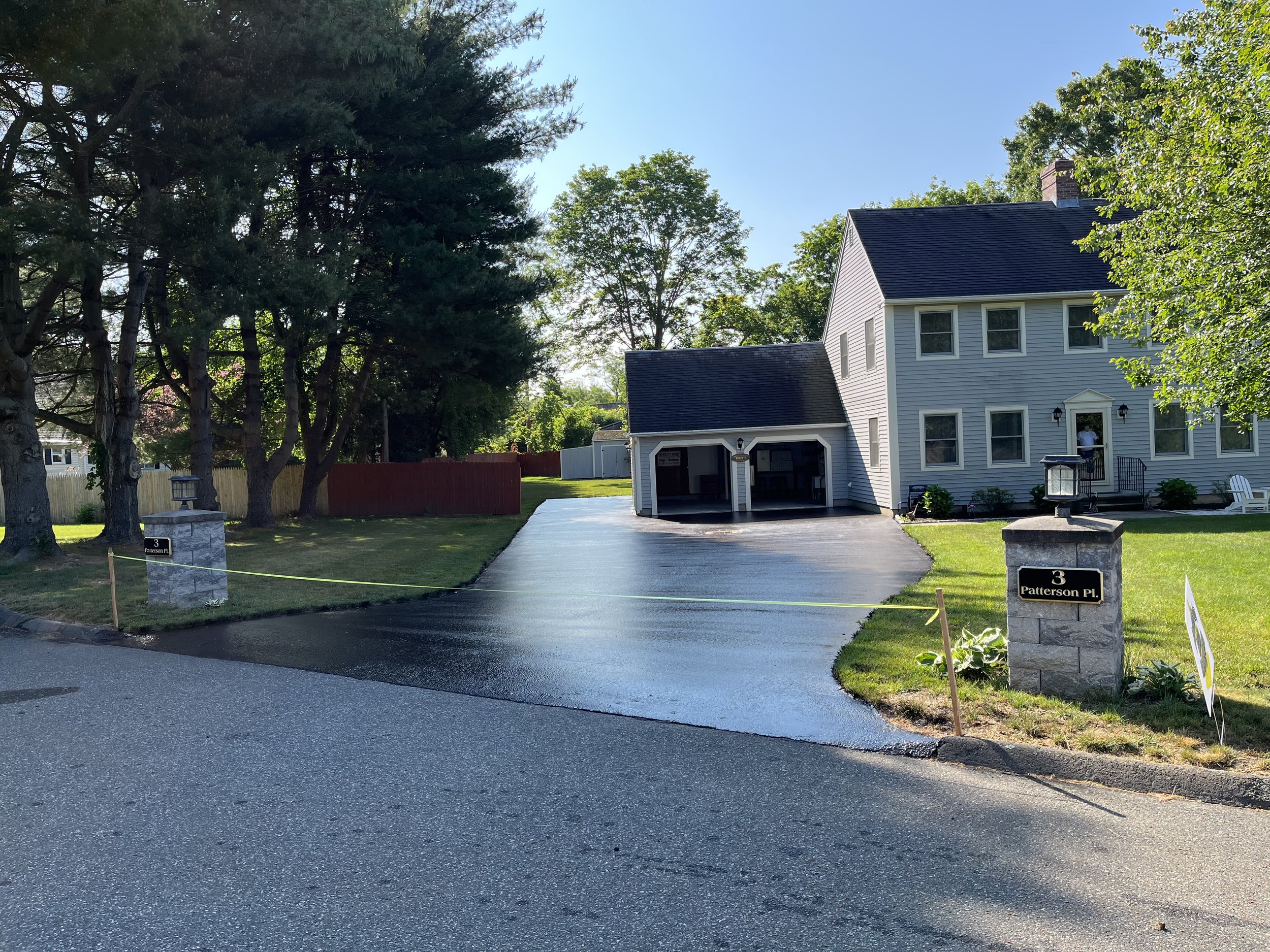Release the Potential: Regrading and Asphalt Sealing for Industrial Rooms
Wiki Article
Warm Mix Asphalt: A Sustainable Solution for Pavement
Warm Mix Asphalt (HMA) has arised as a leading lasting option for sidewalk services, supplying a myriad of environmental benefits and innovative innovations. As the need for eco-friendly building and construction techniques expands, discovering the nuances of HMA's sustainability can supply important insights right into the future of pavement options.Environmental Advantages of Warm Mix Asphalt

Moreover, Hot Mix Asphalt assists to alleviate metropolitan warm island effects. Its dark color absorbs sunlight, reducing the quantity of heat mirrored back right into the ambience contrasted to lighter-colored pavements. This can lower ambient temperature levels in city areas, lowering the need for cooling and inevitably minimizing power usage.
In enhancement, Hot Mix Asphalt contributes to enhanced stormwater monitoring. Its porous nature allows water to reenergize and penetrate the sidewalk groundwater supplies, reducing drainage and the risk of flooding. These ecological advantages make Hot Mix Asphalt a sustainable option for leading highways and roads.
Energy Performance in HMA Manufacturing
Is power effectiveness an important consider the manufacturing of Warm Mix Asphalt (HMA)? Definitely. Power plays a substantial role in the production of HMA, impacting both expense and environmental sustainability. One vital element of energy effectiveness in HMA manufacturing is using warm mix asphalt (WMA) technologies (angled parking). WMA enables for the blending and positioning of asphalt at reduced temperature levels compared to standard warm mix asphalt, causing decreased power intake throughout production. This procedure not just decreases gas use but additionally reduces greenhouse gas emissions, making it a more eco pleasant option.Additionally, advancements in plant innovations have actually led to even more energy-efficient HMA production procedures. By optimizing power use in HMA production, the sector can decrease its carbon footprint while keeping high-quality sidewalk products.
Recyclability of Warm Mix Asphalt
The recyclability of Hot Mix Asphalt (HMA) is a critical aspect of its sustainability and long-lasting ecological influence. HMA is one of the most recycled materials in the USA, with over 100 million lots of redeemed asphalt sidewalk (RAP) being recycled annually in brand-new sidewalk building and construction. Recycling HMA provides numerous ecological benefits, such as lowering the need for virgin products, decreasing power consumption throughout production, and reducing the quantity of waste sent to garbage dumps.The procedure of recycling HMA includes crushing the existing pavement, crushing it right into smaller pieces, and blending it with brand-new accumulation and asphalt binder to produce a recycled mix. Overall, the recyclability of HMA plays a considerable function in promoting sustainable techniques within the sidewalk industry.

Long-Term Efficiency of HMA
Asphalt sidewalks show sturdiness and durability over an extensive period, mirroring the long-term performance of Warm Mix Asphalt (HMA) The longevity of HMA can be credited to its ability to hold up against rush hour lots, rough climate condition, and the effects of aging. Research studies have revealed that properly designed and properly built HMA pavements can why not try these out last for two decades or even more with routine upkeep. The secret to maximizing the long-lasting efficiency of HMA hinges on making use of high-quality products, adhering to finest practices in construction, and executing efficient upkeep approaches. Proper drain, regular assessments, and prompt repairs are vital for preserving the architectural integrity of HMA sidewalks gradually. In addition, improvements in HMA innovation, such as the usage of polymer-modified binders and cozy mix asphalt, have actually further enhanced the durability and long life of HMA pavements. By focusing on top quality construction and upkeep practices, HMA remains to confirm itself as a economical and sustainable service for long-lasting sidewalk infrastructure.
HMA: Durability and Sustainability
Showing both resilience and sustainability, Warm Mix Asphalt (HMA) has become a foundation in the building of resilient pavement facilities - hot mix asphalt. HMA's resilience stems from its capacity to stand up to heavy loads, harsh weather condition problems, and high traffic volumes, making it a dependable choice for roads, highways, and airport terminal runways. The structure of HMA, which normally consists of accumulations, binder, and filler, plays a vital function in improving its long life and resistance to tear and use
Furthermore, HMA's sustainability depends on its recyclability and energy-efficient manufacturing process. The ability to reuse recovered asphalt pavement (RAP) in new HMA mixes minimizes the need for virgin products and lessens the ecological impact of sidewalk building and construction and maintenance. In addition, the energy efficiency of producing HMA hinges on its lower mixing temperature levels contrasted to various other pavement materials, causing reduced power consumption and greenhouse gas discharges.
Conclusion
In conclusion, warm mix asphalt (HMA) supplies a lasting remedy for pavement with its eco friendly attributes. HMA's recyclability, energy efficiency in production, and long-lasting resilience make it an environment-friendly option for roadway building.
HMA is one of the most recycled products in the United States, with over 100 million loads of reclaimed asphalt pavement (RAP) being click here for more reused annually in brand-new sidewalk construction.The procedure of recycling HMA entails crushing the existing sidewalk, crushing it right into smaller pieces, and blending it with brand-new accumulation and asphalt binder to produce a recycled mix.Asphalt pavements demonstrate longevity and resilience over an extensive period, reflecting the lasting efficiency of Hot Mix Asphalt (HMA) In addition, innovations in like it HMA technology, such as the use of polymer-modified binders and cozy mix asphalt, have actually better enhanced the sturdiness and long life of HMA pavements. The capacity to reuse redeemed asphalt pavement (RAP) in new HMA mixtures decreases the demand for virgin materials and decreases the ecological effect of sidewalk building and construction and upkeep.
Report this wiki page